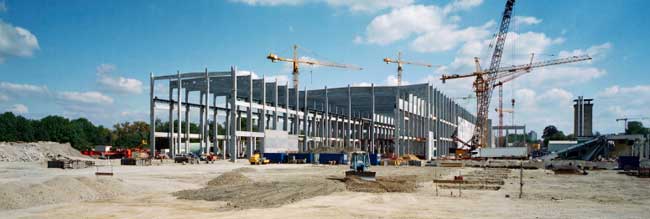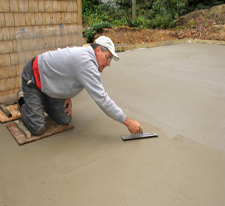The Environment of Successful Building Part IV: The Integrity
 A successful building team is formed on each teammate’s ability to rely the other. Contractors and subcontractors deliver on project management expectations, and they sometimes deliver inferior-quality floors. Contractors have a huge impact on a successful building project, and on everyone who is vested in its completion.
A successful building team is formed on each teammate’s ability to rely the other. Contractors and subcontractors deliver on project management expectations, and they sometimes deliver inferior-quality floors. Contractors have a huge impact on a successful building project, and on everyone who is vested in its completion.
The Moisture Content Needs of A Quality Floor
Once concrete cures, a floor still needs to continue through the process of drying. A “dry” floor is one that has reached the relative humidity (RH) specified by the flooring manufacturer. The exact target range will depend on the flooring adhesive or application that is specified, and in a time-line crunch, having accurate RH readings can help a person choose alternate adhesives or flooring materials specifically geared to the slab’s current moisture condition. Obviously, this should be decided with the most accurate information available to avoid complications down the road. Properly-installed materials withstand pressure and time – the goal of all successful building structures.
The Consequences of Quality Floors
 When builders install flooring with insufficient moisture content readings and the floor fails, moisture remediation and full floor replacement is sometimes the only option. Who pays for that? Courts often decide. However, floor failure causes suffering which extends far beyond the business arena. Occupants must delay move-in, re-book movers, revise dates for moving out of former premises, change travel bookings, rebook utility hook-ups and more. Who pays for that? In essence, failure to ensure accurate moisture content testing weakens more than the floor, and the success of the building project may ride on it. The consequences are huge.
When builders install flooring with insufficient moisture content readings and the floor fails, moisture remediation and full floor replacement is sometimes the only option. Who pays for that? Courts often decide. However, floor failure causes suffering which extends far beyond the business arena. Occupants must delay move-in, re-book movers, revise dates for moving out of former premises, change travel bookings, rebook utility hook-ups and more. Who pays for that? In essence, failure to ensure accurate moisture content testing weakens more than the floor, and the success of the building project may ride on it. The consequences are huge.
How to Monitor MC
If monitoring moisture content is key to flooring installation, moisture measurement is surely an element of successful building. There are several ways to measure moisture content, but they do not produce equally-integral results. Wagner Meters has developed proprietary digital technology, the Rapid RH, to read moisture RH% levels in concrete. Installers place in situ probes at various locations in a slab, and each one provides instant data. As concrete forms and dries, moisture vapors migrate. Not a problem. Contractors can continuously measure the slab’s moisture content until it reaches the specified moisture content for the flooring application. When the proper moisture level is achieved, the successful building project can proceed with the assurance of a high-quality floor.
Additional Reading:
The Environment of Successful Building Part I: The Envelope
The Environment of Successful Building Part II: The Installation